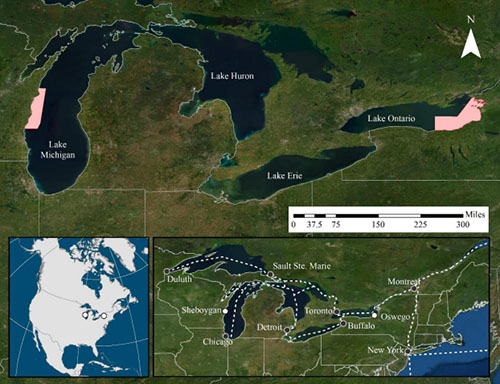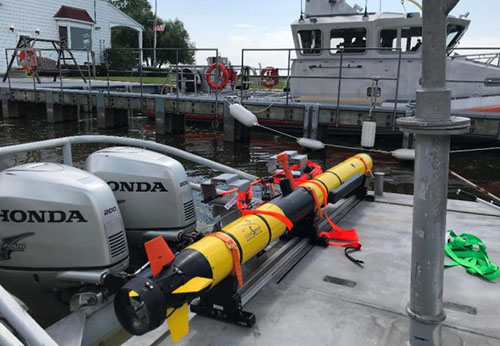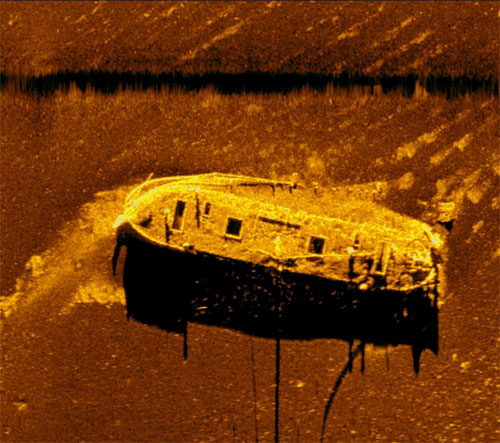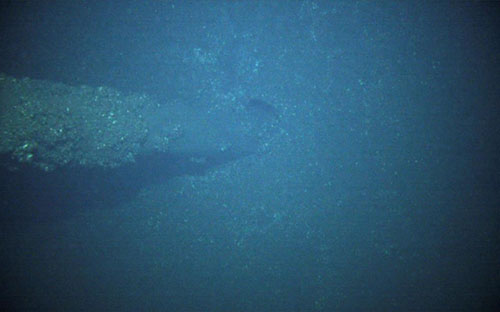
From July 28 to August 20, 2021, an interdisciplinary team of researchers led by NOAA’s Office of National Marine Sanctuaries searched for maritime heritage resources in Lakes Michigan and Ontario using a suite of crewed and uncrewed (autonomous) systems.

Map showing the Wisconsin Shipwreck Coast National Marine Sanctuary in Lake Michigan and the proposed Lake Ontario National Marine Sanctuary in Lake Ontario, which were surveyed during the Maritime Heritage in America’s Inland Seas expedition. Image courtesy of NOAA. Download largest image (jpg, 276 KB).
The Great Lakes provide a natural water highway extending into the heart of North America and have long been critical to the economic and social development of the United States. Six thousand historic shipwrecks are estimated to be submerged across the five Great Lakes, serving as tangible reminders of the hard work involved in our nation’s building. As such, the Wisconsin Shipwreck Coast National Marine Sanctuary in Lake Michigan was designated in 2021, and a proposed Lake Ontario National Marine Sanctuary is under consideration.
Shipwrecks can be difficult to detect and reach, which makes it challenging to explore, identify, and evaluate them. To overcome these challenges and survey and characterize the diverse underwater and coastal environments of Lakes Michigan and Ontario, the team of federal, state, academic, commercial, and nonprofit partners devised and employed a novel approach using three coordinated autonomous mapping platforms outfitted with multibeam and side-scan sonars, magnetometers, and cameras. These platforms included an uncrewed aerial vehicle for mapping above the surf zone, autonomous surface vehicles for shallow-water mapping, and an autonomous underwater vehicle for deep-water mapping. Scientific diving/snorkeling operations were also conducted to investigate anomalies in the data, where appropriate.

The University of Delaware Iver3 autonomous underwater vehicle used during the Maritime Heritage in America’s Inland Seas expedition. Image courtesy of NOAA. Download largest image (jpg, 226 KB).
During their field operations, the team surveyed known shipwreck sites, refining their locations and descriptions, as well as new sites of interest and potential historic significance on the lake beds. Among the known shipwrecks, the historic barge Onondaga and steamer Ellsworth are in good condition with few anthropogenic impacts. New discoveries include two potential historic resources, one in each of the lakes. Additional research is recommended to support evaluation of the proposed Lake Ontario National Marine Sanctuary, the eligibility of known and new resources for the National Register of Historic Places, and more.

The historic vessel Onondaga as seen in side-scan sonar data collected by an autonomous underwater vehicle Maritime Heritage in America’s Inland Seas expedition. Image courtesy of NOAA/University of Delaware. Download largest image (jpg, 328 KB).

The standing mast on Onondaga, showing a good degree of structural integrity, imaged by an autonomous underwater vehicle during the Maritime Heritage in America’s Inland Seas expedition. Image courtesy of NOAA/University of Delaware. Download largest image (jpg, 151 KB).
To further this research, the expedition team will archive and make their data publicly available through the NOAA Ocean Exploration Data Atlas. They hope that their exploratory efforts will catalyze future ground-truthing to improve our knowledge about the history of U.S. inland seas and support investigations of other maritime heritage resources.
Read the project’s final report (pdf, 10.8 MB) to learn more.